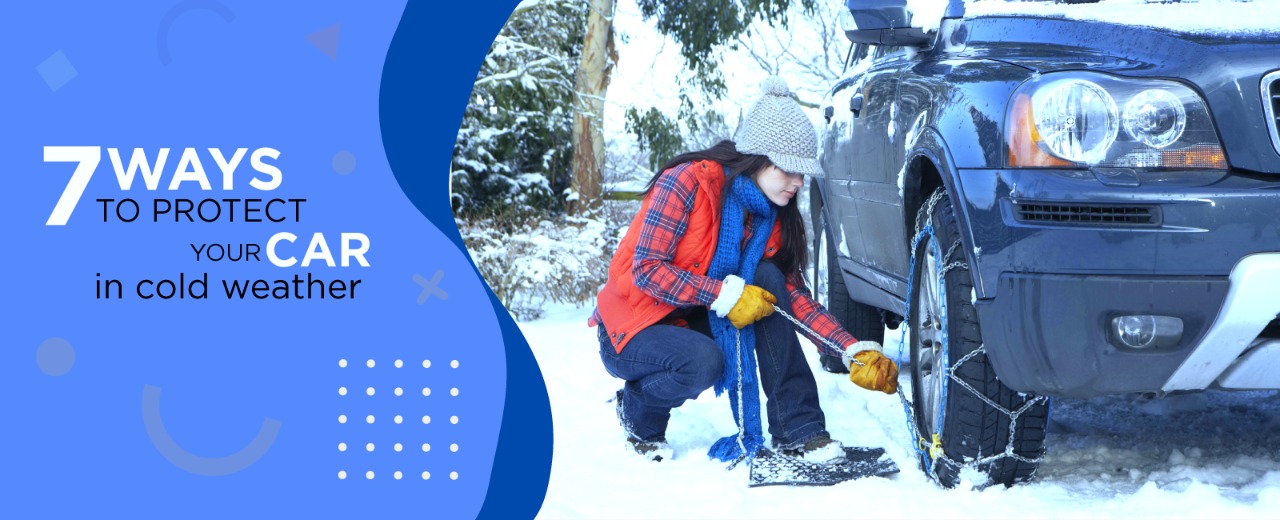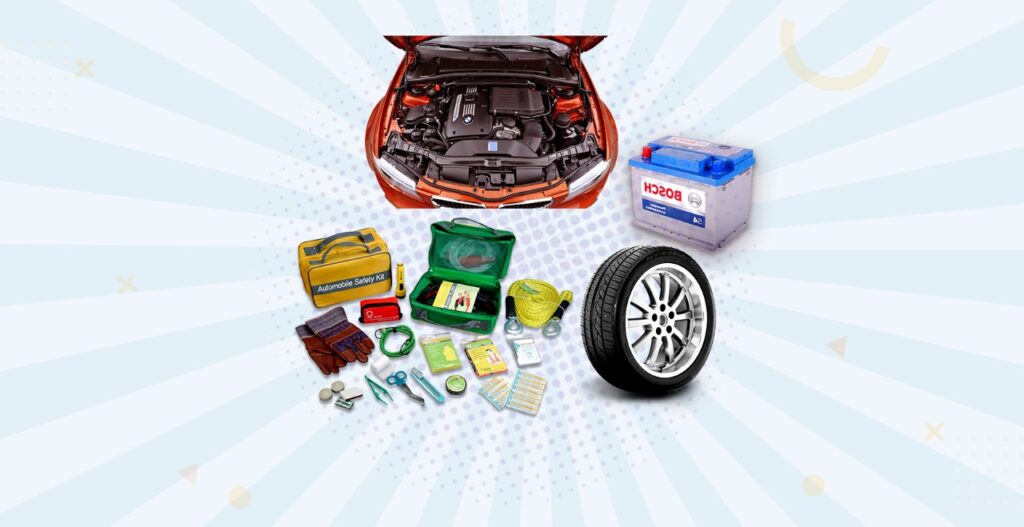7 Ways to Protect Your Car from Cold Weather
by Muskan · Published · Updated

If you are like most people, who tend to cause a lot of damage to your car and put yourself in danger. Cold weather is difficult even for very new cars and if you make these common mistakes, you could be on the verge of expensive repairs! So we present you 7 tips on how you can take care of your car during winters:
Let Your Car Engine Heat
Heat your car engine, aiming for at least 2-3 minutes for the oil to run on the engine. Be sure to open the garage and check that the tailpipe is clear before burning the car to avoid carbon monoxide poisoning. Moving as soon as you start a car does not allow oil to get flowing and lubricate parts. If your car stays in the cold overnight, the oil will not go away. Engine heating will allow the oil to thin and flow as normal and lubricate all parts of the engine, avoiding damage to various parts of your car.
All-Weather vs. Winter tires
When a car leaves a sales area, it usually has all the weather tires. These tires are designed to boost the fuel economy and last for thousands of miles. All-weather tires do well on both, dry and wet roads, and on dusty snowy roads.
With the exception of light dust emissions, all-weather tires are not suitable for safe driving. They do not work well in snow or in snowy conditions.
The Honda Civic Si was equipped with both, all-weather and winter tires and passed several tests each. Both of these tests took place in frozen and snowy conditions. First, check how long it takes for a car to reach 40 mph. When fitted with snow wheels, the Civic took 11.7 seconds to reach 40 mph. In contrast, it took 41.7 seconds to reach the same pace with steps throughout the year. This is because winter tread patterns are designed to cut snow and ice.
Next, check how long it takes for a car to stop when traveling at 60 mph. The ability to stand fast is very important. The snow-covered Civic, traveling at 60 mph, needed 362 feet to stand on ice conditions. That’s the length of the football field, including the endpoints. By comparison, with all-weather tires, the car needed 421 feet to stand.
Seasonal tires are a great option for drivers living in moderate areas that are not exposed to extreme cold, snow, and ice in the winter months. For those living in areas where snow is common, it is best to switch to winter tires in winter.
If you decide to buy snow tires, putting them on their wheels is a wise move. That way you can just change the wheels when winter comes and go back to spring. Many beautiful snow tires will last more than once, so keep them in your garage during the summer months.
Examine Your Tire Pressure
The air pressure in your wheels needs to be checked when winter comes. Tire pressure dropped by about one pound per square inch at all 10-degree temperatures. Checking tire pressure in late October will not be an accurate indication of what will happen in January, so check the pressure after it has turned cold. To be safe, check all your tires once a month to make sure they are at the right inflation rate for the entire season.

Battery Maintenance
Many people tend to ignore the batteries of their cars until a problem arises. It is generally assumed that the battery will remain operational. However, cold weather puts a lot of pressure on the batteries because the engines are hard to start and the batteries are weak when cold. As you prepare your car for the winter, check your battery to make sure it is working properly. If not, look for replacements before the temperature drops too low.
Cable connections are also important for your battery performance. If there is rust on the connectors, remove the cables, pour a small amount of baking soda and water into the corrosion, and it should appear easily.
You can also purchase a battery-insulating battery insulator to add an extra layer of protection and warmth against objects.
Wash with Wax
It is a good practice to wash and recommend your car before the first snow. When cars leave the factory, they are treated with primer, undercover, paint, and a clear coat end to protect the car’s visible parts.
As the protective layers wear down over time, soaking your car in wax is the best way to protect it from corrosion and oxidation.
In addition, you should wash it as often as possible (weather permitting) to clean the road salt and slush. Salt can cause serious damage to the structure of your car, the body and the bottom of the cart.
When cleaning your car, make sure that it is clean and undamaged. The salt accumulates in the nooks and crannies under the car, and if not removed can turn the metal into rust.
Emergency Vehicle Survival Kit
Chances are that over the years you have seen cars and trucks (or used) stuck on the roads and highways during the winter. Some of them do not last for hours. This is the reason it is always ideal to pack a safety kit. If possible, find yourself waiting for help.
The emergency kit should include:
• Sleepwear
• Folding nylon bag or small backpack for carrying essentials when disposing of a vehicle
• First aid kit
• Flashlight
• Hand/foot heaters
• Heavy garbage bags (you may be surprised at how warm they are)
• Medications
• A multi-purpose knifes
• Phone charger
• A small shovel
• A small set of tools
• Shoes / walking boots
• Water/power bars
• Work gloves
It is only natural to take care of yourself as winter approaches. Finally, having a well-maintained battery and an emergency kit can save your life. Knowing that your car will start under cold conditions means that you will have heat when you need it most, and an emergency kit that includes other essentials like food, bedding, and medication can save your life.
Always Fuel
During the winter months, keep your electric tank at least half full. A full gas tank helps keep moisture out, which can help keep the fuel line cold. Thickness can build up in the empty part of your electric tank. In winter, that shortening can trap cold layers on your fuel lines. The best way to avoid this is to keep your tank at least half full in winter.



